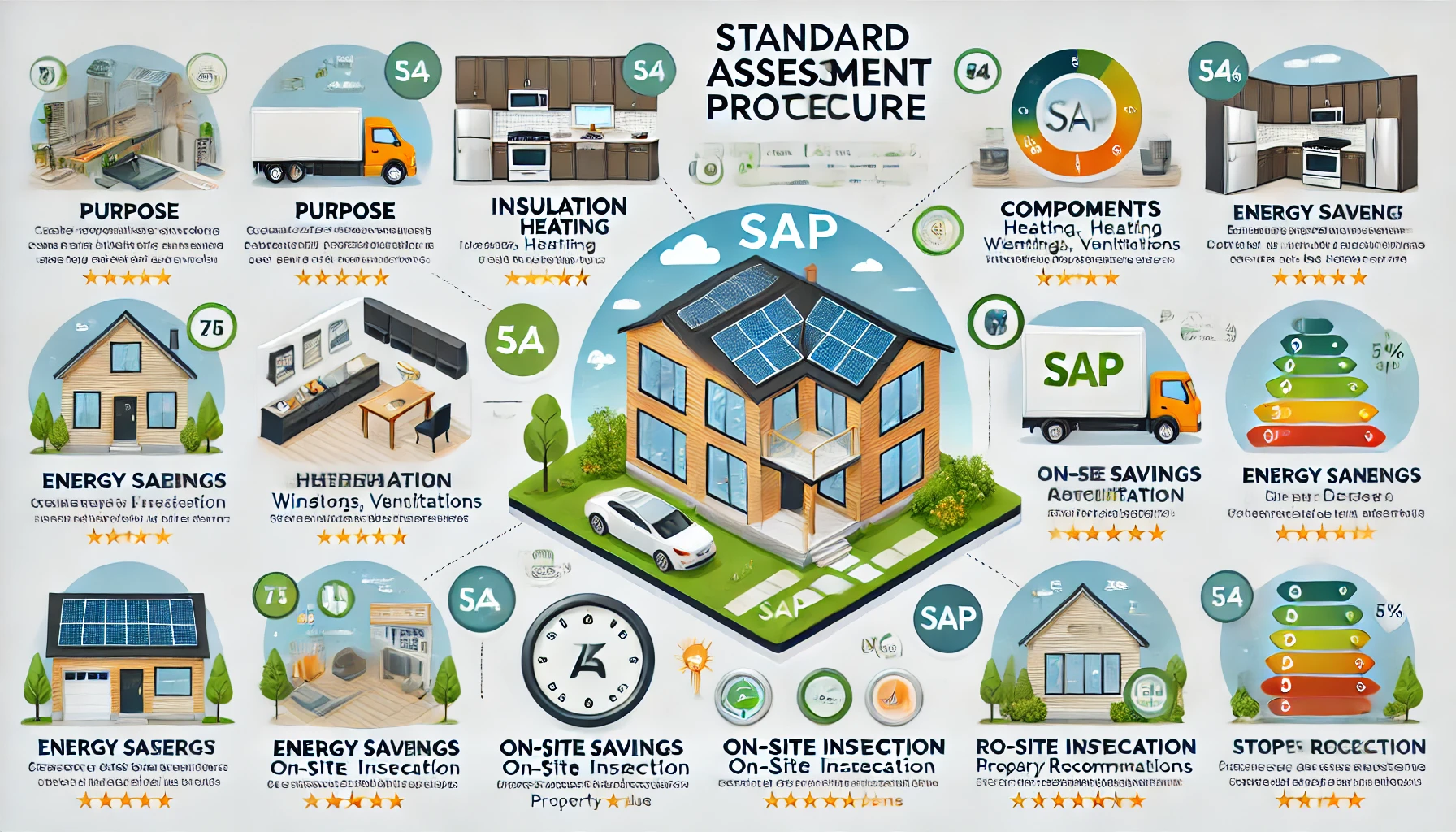What is the Standard Assessment Procedure? A Guide by Discoveringly for Canadians
The Standard Assessment Procedure (SAP) is an essential methodology in Canada, specifically used to evaluate the energy efficiency of buildings and homes. This procedure plays a critical role in helping homeowners, builders, and policymakers understand energy consumption, environmental impact, and potential savings. At Discoveringly, we’re dedicated to helping Canadians make informed decisions about their homes, so here’s a comprehensive guide on what SAP is, how it’s applied in Canada, and why it’s important.
1. Understanding the Standard Assessment Procedure (SAP)
The Standard Assessment Procedure is a national system designed to measure and evaluate the energy efficiency of residential properties. In Canada, SAP is part of the EnerGuide program, a government initiative aimed at encouraging homeowners to improve their homes’ energy efficiency. This assessment provides an overall rating based on energy usage, greenhouse gas emissions, and heating requirements, helping Canadians make eco-conscious choices that reduce utility costs and environmental impact.
How SAP Works
- Energy Evaluation: SAP assesses a building’s energy usage by considering factors like heating, cooling, ventilation, insulation, and energy consumption patterns.
- EnerGuide Rating: After the evaluation, an EnerGuide rating is assigned, usually expressed as an energy consumption figure in gigajoules per year.
- Benchmarking: Homes are compared against standardized benchmarks, allowing homeowners to understand where their property stands in terms of energy efficiency relative to others in Canada.
With these insights, Canadians can make informed decisions about potential energy-efficient upgrades.
2. The Importance of SAP for Canadian Homeowners
There are multiple benefits to conducting a Standard Assessment Procedure in Canada:
Energy Savings
The SAP helps homeowners understand how efficiently their home uses energy. By identifying specific areas where energy loss occurs—such as outdated windows or insufficient insulation—SAP encourages Canadians to invest in improvements that can save on monthly energy bills.
Environmental Impact
Canada is committed to reducing greenhouse gas emissions, and improving energy efficiency in homes is a significant step towards meeting these goals. The SAP provides insights into the carbon footprint of a household, helping individuals make decisions that contribute to a greener Canada.
Property Value
Homes with higher energy efficiency ratings are often more attractive to buyers, as they indicate potential savings and environmental responsibility. By achieving a high SAP rating, homeowners can increase their property’s appeal and potentially its market value.
Access to Incentives and Rebates
To encourage energy-efficient home upgrades, Canadian governments and utility providers often offer incentives and rebates. An SAP assessment is often a requirement for accessing these programs, giving homeowners the information needed to take advantage of financial assistance for energy improvements.
3. Components Assessed in SAP
The Standard Assessment Procedure evaluates several critical components within a building to determine its energy efficiency rating. Each component contributes to the overall energy consumption and thermal comfort of a home.
Insulation Levels
One of the most significant factors influencing energy efficiency is insulation. SAP assesses insulation levels in the walls, roof, and floors, determining how well they retain heat. In colder climates, high-quality insulation helps reduce heating costs, making it a priority in Canadian homes.
Heating and Cooling Systems
The type, age, and efficiency of heating and cooling systems play a significant role in energy usage. SAP assesses these systems, recommending upgrades if necessary. Many Canadian homes rely on natural gas or electricity for heating, but switching to more efficient systems, such as heat pumps, can lead to significant savings.
Windows and Doors
Older or poorly insulated windows and doors are common sources of energy loss. The SAP evaluation includes an analysis of windows and doors, identifying upgrades that could improve energy efficiency. Modern windows with double glazing or low-emissivity coatings are highly effective in reducing energy loss.
Ventilation and Air Sealing
Proper ventilation is essential for maintaining indoor air quality, yet air leaks can lead to energy loss. SAP evaluates the home’s ventilation systems and the effectiveness of air sealing to ensure that energy is not wasted through drafts or poor airflow.
Lighting and Appliances
In recent years, energy-efficient lighting and appliances have become more accessible. The SAP considers these elements, encouraging the use of LED lighting and ENERGY STAR-rated appliances to further reduce energy consumption.
4. The SAP Process in Canada
A Standard Assessment Procedure assessment is typically carried out by a certified energy advisor who follows these key steps:
Pre-Assessment Preparation
Before the assessment, homeowners are advised to gather relevant information about their property’s energy use, such as previous energy bills. This step helps the energy advisor get an accurate view of current energy consumption patterns.
On-Site Assessment
The energy advisor conducts an on-site assessment, which includes:
- Visual Inspection: A thorough inspection of the building’s insulation, heating systems, windows, doors, and other structural elements.
- Blower Door Test: This test checks for air leaks by temporarily lowering indoor air pressure and identifying areas where air escapes.
- Data Collection: Information on home dimensions, construction materials, and insulation levels is collected.
EnerGuide Rating Calculation
Using data collected on-site, the energy advisor calculates an EnerGuide rating for the home. This rating reflects the amount of energy the property consumes in an average year, expressed in gigajoules (GJ). Lower ratings indicate higher energy efficiency, giving homeowners a target to work towards.
Report and Recommendations
After the rating is calculated, the energy advisor provides a detailed report outlining the current energy efficiency of the property and offering specific recommendations for improvements. These recommendations often focus on enhancing insulation, upgrading heating systems, or sealing air leaks.
5. How SAP Benefits Canadian Communities
The Standard Assessment Procedure not only benefits individual homeowners but also contributes positively to Canadian communities as a whole.
Energy Conservation
Widespread adoption of SAP can lead to significant energy savings nationwide. When homes are more efficient, energy demand decreases, leading to less strain on utility providers and natural resources.
Climate Change Mitigation
Reducing household energy consumption helps Canada meet its carbon reduction goals, which is essential in combating climate change. By making energy-efficient home upgrades, Canadian homeowners are actively contributing to a cleaner, more sustainable future.
Supporting Local Economies
SAP assessments create demand for energy advisors, green construction, and environmentally-friendly products, supporting jobs within the energy efficiency sector. Additionally, the increased demand for materials like insulation, energy-efficient windows, and sustainable heating systems benefits local suppliers and contractors.
6. Preparing for an SAP Assessment
If you’re considering an SAP assessment for your home, here’s how to get started:
- Contact a Certified Energy Advisor: In Canada, SAP assessments are conducted by certified energy advisors who follow federal guidelines. Search for registered advisors in your region who can provide a reliable evaluation.
- Gather Home Information: Prepare details on your home’s heating systems, appliances, and insulation to help the advisor get a comprehensive view of your energy usage.
- Explore Rebate Programs: Check local and federal programs offering rebates for energy-efficient upgrades. With an SAP assessment, you may qualify for financial assistance to offset upgrade costs.
Conclusion
The Standard Assessment Procedure is an invaluable tool for Canadian homeowners who want to reduce their energy costs, improve property value, and contribute to a greener Canada. By understanding how SAP assessments work and what benefits they offer, you can make informed choices about your home’s energy efficiency. At Discoveringly, we believe that knowledge is power, and understanding the SAP process empowers Canadians to take control of their energy use, reduce environmental impact, and contribute to a sustainable future for all.






